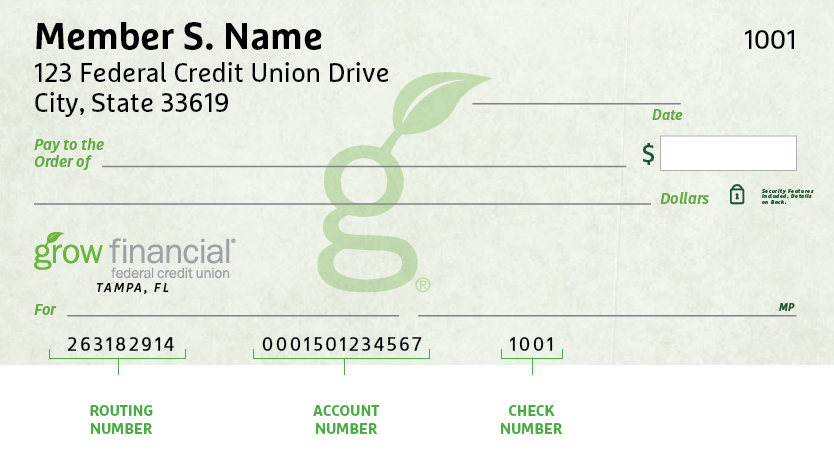- Personal
- Membership
- Membership
- Rates & Fees
- Checking
- Checking
- Personal Loans
- Personal Loans
- Wealth Management
- Investment Services
- Financial Advisors
- Resource Center
- Business

July 6, 2023
Saving for College Education with 529 Plans
One of the biggest life events that many people save up for is a college education for their child. Given the growing cost of college, having a savings strategy in place makes sense. One of the best options available is a 529 plan, which makes a great cornerstone of any College Savings Plan. It’s a tax-advantaged savings vehicle that can be used to pay for qualified educational expenses. Anyone can open a 529 plan, and there are two types: College Savings Plans and Prepaid Tuition Plans.
529 College Savings Plan
A 529 College Savings Plan is the most popular option. It’s an individual investment account that you contribute money to, and your funds are allocated to your choice of one of the plan’s pre-established investment portfolios. Almost every state offers a 529 College Savings Plan, and you can join any state’s plan.
Use your 529 College Savings Plan funds for:
- The full cost of any accredited college or graduate school in the United States or abroad, including tuition, fees, room, board, books and supplies.
- Certified apprenticeship programs, including fees, books, supplies and equipment.
- Student loan repayment (with a $10,000 lifetime limit per 529 plan beneficiary and $10,000 limit per each of the beneficiary’s siblings).
- K–12 tuition expenses, up to $10,000 per year.
As an investment account, returns aren’t guaranteed. However, investment options range from conservative to aggressive in terms of risk, so you can choose what you’re most comfortable with. You can also change your investment allocation over time to lower risk options as your child gets older, and some plans even do this automatically. The best part? Your contributions grow tax-deferred, and your earnings are completely tax free at the federal level when they are used for the beneficiary’s qualified education expenses.
Withdrawals that aren’t used for qualified expenses are subject to federal income tax with a 10% penalty tax, and you should always read the issuer’s official statement carefully and consider the investment objectives, risks, fees and expenses associated with a 529 plan before investing.
529 Prepaid Tuition Plan
The second type of 529 plan is a Prepaid Tuition Plan, which is currently available in nine states. As the name suggests, you prepay your child’s college tuition at today’s prices through the purchase of certain units or credits which helps protect you against future increases in college tuition costs. Prepaid Tuition Plans aren’t tied to the stock market, so there’s no investment risk to consider. The funds can only be used on mandatory fees and tuition, but any withdrawals used for qualified expenses are not taxable. To participate in a state’s Prepaid Tuition Plan, you must live in the state, and your child would need to choose a college that participates in the plan, typically in-state public colleges.
Considering a 529 plan? Contact a CFS* Financial Advisor.
When you open a 529 plan, you’ll enjoy peace of mind knowing that you’re securing your child’s educational future in a strategic, tax-advantaged way. Ready to learn more about college savings options? We’re here to help!
Grow has contracted with CUSO Financial Services, L.P. (CFS) to provide investment services, and your CFS* Financial Advisor will help you build a plan that meets your needs. The advisor will look at your current spending, saving and investing, learn about your goals and priorities, make objective recommendations and support your efforts moving forward through the implementation and management of your plan.
SCHEDULE A COMPLIMENTARY CONSULTATION
*Non-deposit investment products and services are offered through CUSO Financial Services, L.P. (“CFS”), a registered broker-dealer (Member FINRA/SIPC) and SEC Registered Investment Advisor. Products offered through CFS: are not NCUA/NCUSIF or otherwise federally insured, are not guarantees or obligations of the credit union, and may involve investment risk including possible loss of principal. Investment Representatives are registered through CFS. The Credit Union has contracted with CFS to make non-deposit investment products and services available to credit union members. For specific tax advice, please consult a qualified tax professional.
Posted In:
How to Find Your Routing & Account Numbers
When you make a payment online, by phone or on a mobile device, you may be asked for our routing number and your checking account number. Credit unions and banks use these numbers to identify accounts and make sure money gets where it’s supposed to be. You’ll also need to provide your routing and checking account numbers for:
- Direct deposits
- Electronic checks
- Military allotments
- Wire transfers
Where to Find Your Routing & Checking Account Numbers
Your personal checks include both our routing number and your account number, as shown on the Grow check example below.

Don’t have a Grow check? No worries.
Visit any Grow store and ask for a Direct Deposit Form. It lists both your routing number and checking account number.
Making a Loan Payment
When it comes to making payments, we try to make it as painless as possible to pay your loan every month. We have several different ways to pay, including convenient online options.
Pay Online
You have two ways to pay online by transferring funds from another bank or credit union.
- Grow Online Banking (Preferred payment method for any loan)
This is the simplest way to pay your loan. You can make one-time payments or set up automatic recurring payments in Grow Online Banking. Once you log in, select “Transfer/Payments” from the menu. If you’re not enrolled in Grow Online Banking yet, you can set up your account in just a few minutes.
Log In
- Debit Card or ACH (Available for auto, personal loans and HELOCs)
Note: ACH and debit card payments are not available for credit cards or most mortgages, except HELOCs.
We accept ACH payments with no additional fees, consumer Mastercard® and Visa® debit cards with a convenience fee of $4.95, or commercial Mastercard® and Visa® debit cards with a convenience fee of 2.95% of the payment amount. To get started with an online ACH or debit card payment, select Pay Now below.
Pay Now
Pay by Mail
You can also pay any Grow loan by check through the mail. Please remember to include your account number and Grow loan number on the check. (For credit card payments, please do not write your 16-digit credit card number on the check, which can cause a delay in processing the payment.)
Address for auto, credit card, personal loan and HELOC payments:
Grow Financial Federal Credit Union
P.O. Box 75466
Chicago, IL 60675-5466Address for personal first or second mortgages and home equity payments:
Grow Financial Federal Credit Union
P.O. Box 11733
Newark, NJ 07101-4733You Are About To Leave GrowFinancial.org
At certain places on this site, there are links to other websites. Grow Financial Federal Credit Union does not endorse, approve, represent, certify or control those external sites. The credit union does not guarantee the accuracy, completeness, efficacy, timeliness or accurate sequencing of the information contained on them. You will not be represented by Grow Financial Federal Credit Union if you enter into a transaction. Privacy and security policies may differ from those practiced by the credit union. Click CONTINUE if you wish to proceed.
